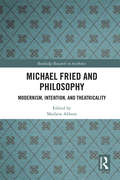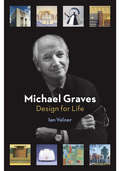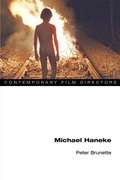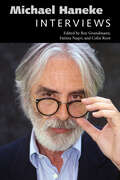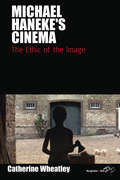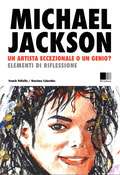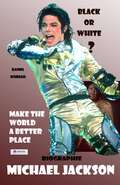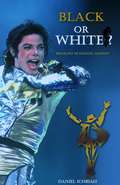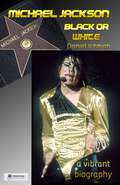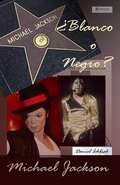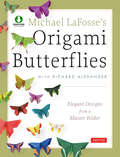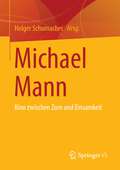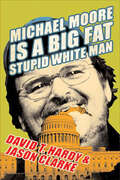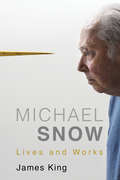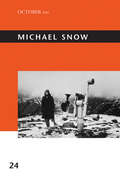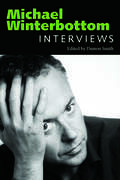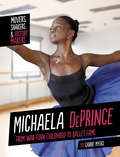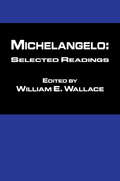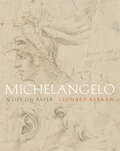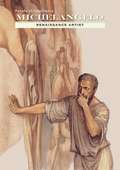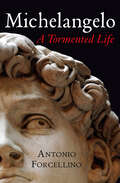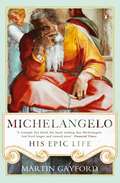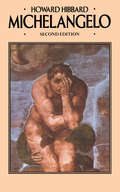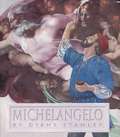- Table View
- List View
Michael Fried and Philosophy: Modernism, Intention, and Theatricality (Routledge Research in Aesthetics)
by Mathew AbbottThis volume brings philosophers, art historians, intellectual historians, and literary scholars together to argue for the philosophical significance of Michael Fried’s art history and criticism. It demonstrates that Fried’s work on modernism, artistic intention, the ontology of art, theatricality, and anti-theatricality can throw new light on problems in and beyond philosophical aesthetics. Featuring an essay by Fried and articles from world-leading scholars, this collection engages with philosophical themes from Fried’s texts, and clarifies the relevance to his work of philosophers such as Ludwig Wittgenstein, Stanley Cavell, Morris Weitz, Elizabeth Anscombe, Arthur Danto, George Dickie, Immanuel Kant, Friedrich Schiller, G. W. F. Hegel, Arthur Schopenhauer, Friedrich Nietzsche, Denis Diderot, Maurice Merleau-Ponty, Roland Barthes, Jacques Rancière, and Søren Kierkegaard. As it makes a case for the importance of Fried for philosophy, this volume contributes to current debates in analytic and continental aesthetics, philosophy of action, philosophy of history, political philosophy, modernism studies, literary studies, and art theory.
Michael Graves
by Eric KudalisA biography profiling the career of Michael Graves, the modernist-trained architect whose major commissions include the Walt Disney World Swan and Dolphin hotels in Orlando, Florida.
Michael Graves: Design for Life
by Ian VolnerOne of the most prominent and prolific designers and architects of the late twentieth century, Michael Graves is best known for his popular product designs, including the world-famous Alessi whistling-bird teakettle, and controversial buildings, such as the Portland Building in Oregon, Humana Building in Kentucky, and Dolphin and Swan Hotels at Walt Disney World, Florida. Graves was widely seen as the leading voice of postmodernist architecture, which reintroduced human scale, color, and, sometimes, playful forms into the stark white vocabulary of modernism. Following a devastating illness that paralyzed him from the chest down, Graves became a tireless designer and advocate of improved health-care products and facilities before his sudden death in 2015. Shortly before this, he began a series of interviews with journalist Ian Volner, which form the basis of this biography of a remarkable designer. Volner also conducted numerous interviews with Graves's family, patrons, colleagues, and friends. What emerges is a meticulously researched, anecdote-rich human story, as well as a primer on the American architecture scene of the past sixty years and a portrait of a man whose deep passion for his art brought pleasure to millions.
Michael Haneke (Contemporary Film Directors)
by Peter BrunetteIn this book, Peter Brunette analyzes the theatrical releases of Austrian film director Michael Haneke, including The White Ribbon, winner of the 2009 Palme d'Or at the Cannes Film Festival. Perhaps best known to U.S. audiences for Caché, The Piano Teacher, and his remake of his own disturbing Funny Games, Haneke has consistently challenged critics and film viewers to consider their own responsibility for what they watch when they seek to be "merely" entertained by such studio-produced Hollywood thrillers. Brunette highlights Haneke's brilliant use of uncompromising visual and aural techniques to express complex themes. His most recent films contain what has become his hallmark: a moment of violence or shock that is not intended to be exploitative, but that nevertheless goes beyond the conventional boundaries of most art cinema. Lauded for graphically revealing the powerful influence of contemporary media on social behavior, his films offer a chilling critique of contemporary consumer society. Brunette discusses Haneke's major releases in English, French, and German, including the film that first brought him to international attention, Benny's Video. The first full-length study of Haneke's work in any language, this book also includes an interview with the director that explores his motivations and methods.
Michael Haneke: Interviews (Conversations with Filmmakers Series)
by Roy Grundmann, Fatima Naqvi, and Colin RootSpanning five decades and twenty-four films, director Michael Haneke’s career is one of the most significant in the history of European art cinema. However, critical reception has long lagged behind his output. By the time Haneke (b. 1942) emerged into the international spotlight as a cinematic visionary with the 1989 Cannes premiere of The Seventh Continent, he had worked in filmmaking for two decades, producing seven feature-length films. As many of his films aired solely on Austrian and German television, they remained unknown to audiences outside the German-speaking world until 2007, when the first comprehensive Haneke retrospective took place in the United States. Michael Haneke: Interviews presents some of Haneke’s most profound interviews to English speakers. The volume features seventeen articles, fourteen of which have been translated into English for the first time, and all of which provide a detailed, eloquent commentary on his films and worldview. This book represents the most extensive collection to date of interviews with the filmmaker, spanning his entire oeuvre—from his earliest television films to his so-called “Glaciation Trilogy” of the 1990s, from the notorious dark satire Funny Games to its similarly notorious 2007 Hollywood remake, and from his French films of the 2000s to his Oscar-winning drama, Amour, and his most recent feature, Happy End.
Michael Haneke's Cinema
by Catherine WheatleyExisting critical traditions fail to fully account for the impact of Austrian director, and 2009 Cannes Palm d'Or winner, Michael Haneke's films, situated as they are between intellectual projects and popular entertainments. In this first English-language introduction to, and critical analysis of, his work, each of Haneke's eight feature films are considered in detail. Particular attention is given to what the author terms Michael Haneke's 'ethical cinema' and the unique impact of these films upon their audiences. Drawing on the moral philosophy of Immanuel Kant and Stanley Cavell, Catherine Wheatley, introduces a new way of marrying film and moral philosophy, which explicitly examines the ethics of the film viewing experience. Haneke's films offer the viewer great freedom whilst simultaneously imposing a considerable burden of responsibility. How Haneke achieves this break with more conventional spectatorship models, and what its far-reaching implications are for film theory in general, constitute the principal subject of this book.
Michael Jackson: un Artista eccezionale, o un Genio? Elementi di riflessione.
by David Abraham Franck VidiellaAnalizzando la carriera di Michael Jackson, Franck Vidiella mette in dubbio la natura sensitiva del termine di "Genio". Basata su una ricerca che conferma il fatto che i grandi genii sono, quasi totalmente, creativi, brillanti, ostinati e pluri-faccettati, ognuna delle tematiche viene analizzata studiando la carriera della Pop Star, in modo tale da offrire elementi per rispondere alla seguente domanda: Era Michael Jackson un'artista eccezionale o un Genio assoluto? La risposta, come potrete vedere, permette un dibattito appassionato.
Michael Jackson – Black or White
by Daniel IchbiahVon allen Bühnenstars der letzten Jahrzehnte ist und bleibt Michael Jackson der faszinierendste, derjenige, der ihm wahrsten Sinne des Wortes aus der Reihe tanzt. Ein wahres Talentbündel, fähig, Shows von seltener Qualität zu inszenieren, Hits für die Ewigkeit zu schreiben, seinen Körper im galaktischen Moonwalk zu bewegen, verführte der 'King of Pop' die Öffentlichkeit zunächst mit seiner Genialität als Künstler. Andererseits musste dasselbe Publikum die exzentrischen Spleens einer Kunstfigur akzeptieren; denn fast hätte es den wie aus einem Märchen entstiegenen Helden auf seinem Weg nach oben aus der Bahn geworfen. Was dennoch bleibt, ist die Essenz seines Erfolgs: 'Billy Jean', 'Thriller', 'Don't stop till you get enough' und andere Songs, die zu Klassikern geworden sind und die Zeit überdauern werden... Steven Spielberg, ein anderer Meister seiner Kunst, drückte dies mit folgenden Worten aus: « Genauso wie es nie einen weiteren Fred Astaire oder einen weiteren Chuck Berry oder einen weiteren Elvis Presley geben wird, wird es nie mehr jemanden wie Michael Jackson geben. » « Sein Talent, seine Lebendigkeit und seine geheimnisvolle Seite machen ihn zu einer Legende... »
Michael Jackson, Black or White: Biographie De Michael Jackson
by Daniel IchbiahEntre todas as estrelas que surgiram em várias décadas, Michael Jackson permanece a mais fascinante, aquela que mais escapa à análise imediata. Pleno de talento, capaz de encenar espetáculos de rara qualidade, de escrever canções eternamente memoráveis, de mover seu corpo duma maneira desconcertante, desde o início Michael Jackson seduziu o público pelas suas qualidades artísticas. Em contrapartida, esse mesmo público precisou aceitar as excentricidades incomuns dum personagem que resta inclassificável, espécie de herói retirado dum conto de fadas, destrambelhado no caminho. Resulta que a História reterá o essencial : Billy Jean, Thriller, Don’t stop till you get enough e outras canções que se tornaram clássicas, destinadas a resistir ao desgaste do tempo... Como declarou outro mestre em sua arte, Steven Spielberg : « Assim como não haverá jamais outro Fred Astaire, ou outros Chuck Berry ou Elvis Presley, jamais haverá alguém comparável a Michael Jackson. Seu talento, sua vivacidade e seu lado misterioso fazem dele uma lenda... » Este livro conta a vida de Michael : concentra-se nos principais episódios de sua vida e descreve a evolução do cantor. Ele conta o making off de Thriller, o álbum de todos os recordes. Também inclui retratos de Quincy Jones, Janet Jackson e LaToya. Por que um gênio da música pop se tornou um personagem enigmático, em busca de uma identidade paralela?
Michael Jackson, Black or White ?
by Daniel IchbiahA vibrant biography of Michael Jackson, the King of Pop, from his earliest years to his tragic death.
Michael Jackson ¿Blanco o Negro?: Michael Jackson ¿Blanco o Negro?
by Daniel IchbiahDescripción De todas las estrellas que aparecieron después de muchas décadas, Michael Jackson era la más fascinante, esa que nos lleva casi que a hacerle un análisis inmediato. Con un increible talento, capaz de poner en escena espectáculos de una extraña naturaleza, de componer éxitos memorables, de transformar su cuerpo de una manera horrorosa, Michael Jackson ha cautivado el público por sus cualidades artísticas. En contraste, ese mismo público ha debido aceptar las excentricidades de un personaje inigualable, un tipo de héroe salido de un cuento de hadas, ese quien se ha descarrilado en el camino. Esta historia contendrá lo esencial: ¨ Billy Jean ¨, ¨ Thriller ¨, ¨ Don’t stop till you get enough ¨ y otras canciones que se convirtieron en clásicos los cuales se niegan a desaparecer con el transcurrir del tiempo… Como ha dicho otro maestro del arte, Steven Spielberg: ¨Como él no habrá jamás; un Fred Astaire u otros como Chuck Berry o Elvis Presley, no existirá una persona que se pueda comparar con Michael Jackson.¨ ¨Su talento, su vivacidad y su lado misterioso hacen de él una leyenda...¨
Michael LaFosse's Origami Butterflies
by Michael G. Lafosse Richard L. AlexanderWhimsical, exquisite and fragile, butterflies and moths have enchanted and inspired people for centuries. Origami artist Michael G. LaFosse is no exception. His original butterfly paper-folding techniques are a dramatic new development in origami-which some have hailed as the most important advance in origami since the first paper cranes appeared centuries ago. Hundreds of LaFosse butterflies have been featured in exhibitions around the world and his iconic designs are now eagerly sought and widely imitated by folding enthusiasts everywhere.Michael LaFosse's Origami Butterflies presents 26 original projects from LaFosse's extensive butterfly and moth repertoire, including all his personal favorites. This collection has many rarely-seen designs, and several of the models illustrate new technical and design achievements made possible by the ingenious "LaFosse Origami Butterfly Folding System."These elegant forms-each created from a single square sheet of paper without cutting or glue-showcase the versatility of the folding system. All are deceptively simple, yet provide a solid foundation for creative flights of fancy in the hands of an experienced folder. Clear step-by-step instructions show you how to make literally hundreds of different variations by making small adjustments to a few key folds! Whether dry-folded from recycled candy wrappers or wet-folded from expensive handmade papers, these designs exemplify the best aspects of the paper folder's art today.This exciting new book with accompanying DVD represents the culmination of a lifetime of designing and perfecting the art of origami butterflies. It contains everything you need to create your own unique collection!Butterflies include:A Butterfly for Vanessa GouldThe Butterfly for Robert LangA Butterfly for Eric JoiselA Swallowtail for Guy KawasakiThe Boston ButterflyThe Mudarri Luna Moth
Michael Mann: Kino zwischen Zorn und Einsamkeit
by Holger SchumacherZum ersten Mal widmen sich zehn deutschsprachige Wissenschaftler mit unterschiedlichen Forschungsschwerpunkten dem Gesamtwerk Michael Manns. Dabei werden die Leser*innen zu einer zweifachen Reise eingeladen: Auf einem faszinierenden Tauchgang in die Filmwelt des gefeierten Regisseurs treten zentrale Themen, Figurenkonstellationen, kulturelle Hintergründe und Wirkungseinheiten zutage, die einen völlig neuen Blick auf seine Kunst eröffnen: Wie schafft es Michael Mann seit mehr als 40 Jahren, ein weltweites Publikum zu fesseln und immer wieder aufs Neue in den Kinosaal zu locken? Was verraten seine Filme dadurch über die unbewussten Sehnsüchte, Obsessionen und Widerstände in unserer Kultur? Gleichzeitig entwickelt sich ein spannender Dialog zwischen den verschiedenen Deutungsansätzen: Anhand populärer Kinofilme wie HEAT oder COLLATERAL wecken die wichtigsten Disziplinen - von der Morphologie bis zur Seduktionstheorie - Neugier auf den Facettenreichtum der deutschsprachigen Filmwissenschaft. Auf diese Weise entsteht ein Buch über die Kunst des Films und seiner Interpretation.
Michael Moore Is a Big Fat Stupid White Man
by David T. Hardy Jason ClarkeWatching Michael Moore in action—passing off manipulating facts in Bowling for Columbine, spinning statistics in Stupid White Men and Dude, Where's My Country?, shamelessly grandstanding at the Academy Awards, and epitomizing the hypocrisy he's made a king's fortune railing against—has spurred authors David T. Hardy and Jason Clarke to take action into their own hands. In Michael Moore Is a Big Fat Stupid White Man, Hardy and Clarke dish it back hard to the fervent prophet of the far left, turning a careful eye on Moore's use of camera tricks and publicity ploys to present his own version of the truth.Postwar documentarians gave us the documentary, Rob Reiner gave us the mockumentary, and Moore initiated a third genre, the crockumentary.How, they ask, does Moore pull off a proletarian, "man-of-the-people" image so at odds with his lifestyle as a fabulously wealthy Manhattanite? And how large of an impact do his incendiary, ill-founded polemics have on the growing community that follows him with near-religious devotion? Loaded with well-researched, solidly reasoned arguments, and laced with irreverent wit, Michael Moore Is a Big Fat Stupid White Man fires back at one of the left's biggest targets—politically and literally.
Michael Snow: Lives and Works
by James KingA biography of Canada’s greatest living artist. Michael Snow is rightly recognized as the greatest living Canadian artist, and he is also acknowledged as one of the most significant figures in Canadian art history. In a productive, lengthy career, he has, in a wide variety of genres, asked (and often answered) some of the most vexing and important issues in the history of art. During his career, the notion of what constitutes a work of art has undergone many changes, and he has been in the forefront of defining these changes. In many ways, he is the visual artist as intellectual: his images are vibrant and compelling but so are the ideas behind them. Ultimately, his work is about perception. What do we really see when we look at a work of art? What is the act of looking all about? What exactly is a work of art? Michael Snow: Lives and Works is a personal and intimate portrait of an artist who has helped shaped the face of Canadian art in our time.
Michael Snow (October Files #24)
by Annette Michelson Kenneth WhiteEssential texts on the work of the influential artist Michael Snow: essays and interviews spanning more than four decades. Few filmmakers have had as large an impact on the recent avant-garde film scene as Canadian Michael Snow (b. 1928). His works in a range of media—film, installation, video, painting, sculpture, sound, photography, drawing, writing, and music—address the fundamental properties of his materials, the conditions of perception and experience, questions of authorship in technologically reproducible media, and techniques of translation through written and pictorial representation. His film Wavelength (1967) is a milestone of avant-garde cinema and possibly the most frequently discussed “structural” film ever made. This volume collects essential texts on Snow's work, with essays and interviews spanning more than four decades.From its earliest issues, October has been a primary interlocutor of Snow's work, and many of these texts first appeared in its pages. Written by such distinguished critics and scholars as Annette Michelson, Hubert Damisch, and Malcolm Turvey, they document Snow's participation in postwar discourses of minimalism, postminimalism, photo-conceptualism, and avant-garde cinema, and examine particular works. Thierry de Duve's essay on linguistics in Snow's work appears alongside Snow's response. The volume also includes other writings by Snow, images from his 1975 work Musics for Piano, Whistling, Microphone, and Tape Recorder, and an interview with the artist conducted by Annette Michelson. Essays and interviewsJean Arnaud, Érik Bullot, Hubert Damisch, Thierry de Duve, Andrée Hayum, Annette Michelson, Michael Snow, Amy Taubin, Malcolm Turvey, Kenneth White
Michael Winterbottom: Interviews (Conversations with Filmmakers Series)
by Damon SmithProlific British director Michael Winterbottom (b. 1961) might be hard to pin down and even harder to categorize. Over sixteen years, he has created feature films as disparate and stylistically diverse as Welcome to Sarajevo, 24 Hour Party People, In This World, Butterfly Kiss, and The Killer Inside Me. But in this collection, the first English-language volume to gather international profiles and substantive interviews with the Blackburn native, Winterbottom reveals how working with small crews, available light, handheld digital cameras, radio mics, and minuscule budgets allows him fewer constraints than most filmmakers, and the ability to capture the specificity of the locations where he shoots. In Michael Winterbottom: Interviews he emerges as an industrious filmmaker committed to a stripped-down approach whose concern with outsiders and docu-realist authenticity have remained constant throughout his career. Collecting pieces from news periodicals as well as scholarly journals, including previously unpublished interviews and the first-ever translation of a lengthy, illuminating exchange with the French editors of Positif, this volume spans the full breadth of Winterbottom's notably eclectic feature-film career.
Michaela DePrince: From War-Torn Childhood to Ballet Fame (Movers, Shakers, and History Makers)
by Carrie MyersMichaela DePrince was born in Sierra Leone and grew up in the United States. She rose to fame as a ballet dancer in the late 2000s. Learn more about DePrince's life as a famous ballerina!
Michaelangelo: A Portrait Of The Greatest Artist Of The Italian Renaissance (Y Ser.)
by William E. WallaceMichaelangelo: Selected Readings is the long-awaited condensation of the five volume English article collection of Michaelangelo's life. Selections include: Life and Early Works; The Sistine Chapel; San Lorenzo; Tomb of Julius II and Other Works in Rome; and Drawings, Poetry and Miscellaneous Studies.
Michelangelo: A Life on Paper
by Leonard BarkanA groundbreaking account of the role of writing in Michelangelo's artMichelangelo is best known for great artistic achievements such as the Sistine ceiling, the David, the Pietà, and the dome of St. Peter's. Yet throughout his seventy-five year career, he was engaged in another artistic act that until now has been largely overlooked: he not only filled hundreds of sheets of paper with exquisite drawings, sketches, and doodles, but also, on fully a third of these sheets, composed his own words. Here we can read the artist's marginal notes to his most enduring masterpieces; workaday memos to assistants and pupils; poetry and letters; and achingly personal expressions of ambition and despair surely meant for nobody's eyes but his own. Michelangelo: A Life on Paper is the first book to examine this intriguing interplay of words and images, providing insight into his life and work as never before.This sumptuous volume brings together more than two hundred stunning, museum-quality reproductions of Michelangelo's most private papers, many in color. Accompanying them is Leonard Barkan's vivid narrative, which explains the important role the written word played in the artist's monumental public output. What emerges is a wealth of startling juxtapositions: perfectly inscribed sonnets and tantalizing fragments, such as "Have patience, love me, sufficient consolation"; careful notations listing money spent for chickens, oxen, and funeral rites for the artist's father; a beautiful drawing of a Madonna and child next to a mock love poem that begins, "You have a face sweeter than boiled grape juice, and a snail seems to have passed over it." Magnificently illustrated and superbly detailed, this book provides a rare and intimate look at how Michelangelo's artistic genius expressed itself in words as well as pictures.
Michelangelo: Renaissance Artist
by Diane CookA painter, poet, sculptor, and more, Michelangelo was one of the most important artists that ever lived. Many of Michelangelo's works are among the most famous in the world, visited by tourists from around the world every day. His painting in the Sistine Chapel in Rome has impressed and inspired people for centuries. His sculpture David is known around the globe. Learn the story of one of the most important artists of all time in Michelangelo: Renaissance Artist.
Michelangelo: A Tormented Life
by Antonio ForcellinoThis major new biography recounts the extraordinary life of one of the most creative figures in Western culture, weaving together the multiple threads of Michelangelo’s life and times with a brilliant analysis of his greatest works. The author retraces Michelangelo’s journey from Rome to Florence, explores his changing religious views and examines the politics of patronage in Renaissance Italy, politics that were complicated by the fact that Michelangelo worked for both the Medici and the Papacy. He discusses Michelangelo’s character in detail, showing him to be a tormented man, solitary, avaricious, deeply religious, burdened with repressed homosexuality and a surplus of creative enthusiasm. Drawing on Michelangelo’s memoirs and personal correspondence, the author paints a portrait of a deeply contradictory man whose work was infused with a sensuality of which he chose to deprive himself. For the first time, Forcellino explores the spiritual turning point Michelangelo experienced between the late 1530s and the early 1540s, a crucial period when he created some of his most important works, such as the Universal Judgement and Moses. Forcellino offers a systematic reconstruction and interpretation of the frescos in the Paolina Chapel which Michelangelo completed in the late 1540s. Although less well-known than their counterparts in the Sistine Chapel, Forcellino shows that these frescos are among the artist’s supreme achievements. The author also seeks to reconstruct the last years of Michelangelo’s life, dark years of which we know very little but which are fundamental to the posthumous creation of the Michelangelo legend. As a restorer and a recognized expert on Michelangelo, Forcellino took part in the restoration of the Sistine Chapel and Moses, two projects which gave us a new perspective on the techniques used by Michelangelo, the way he worked with colour and marble and the tools he used.
Michelangelo: His Epic Life
by Martin GayfordAt thirty one, Michelangelo was considered the finest artist in Italy, perhaps the world; long before he died at almost 90 he was widely believed to be the greatest sculptor or painter who had ever lived (and, by his enemies, to be an arrogant, uncouth, swindling miser).For decade after decade, he worked near the dynamic centre of events: the vortex at which European history was changing from Renaissance to Counter Reformation. Few of his works - including the huge frescoes of the Sistine Chapel Ceiling, the marble giant David and the Last Judgment - were small or easy to accomplish. Like a hero of classical mythology - such as Hercules, whose statue he carved in his youth - he was subject to constant trials and labours.In Michelangelo Martin Gayford describes what it felt like to be Michelangelo Buonarroti, and how he transformed forever our notion of what an artist could be.
Michelangelo (Pelican Ser.)
by Howard HibbardIn this masterly, Howard Hibbard relates Michelangelo's art to his life and to the times in which he lived, relying on the earliest biographies and the latest scholarly research as well as on Michelangelo's own letters and poems. What emerges is both a perspective appraisal of his work and a revealing life history of the man who was arguably the greatest artist of all time.
Michelangelo
by Diane StanleyWhen he was born, Michelangelo Buonarroti was put into the care of a stonecutter's family. He often said it was from them that he got his love of sculpture. It certainly didn't come from his own father, a respectable magistrate who beat his son when he asked to become an artist's apprentice. But Michelangelo persevered. His early sculptures caught the attention of Florence's great ruler, Lorenzo de' Medici, who invited the boy to be educated with his own sons. Soon after, Michelangelo was astonishing people with the lifelike creations he wrested from marble--from the heartbreaking Pietd he sculpted when he was only twenty-five to the majestic David that brought him acclaim as the greatest sculptor in Italy. Michelangelo had a turbulent, quarrelsome life. He was obsessed with perfection and felt that everyone--from family members to his demanding patrons--took advantage and let him down. His long and difficult association with Pope Julius II yielded his greatest masterpiece, the radiant paintings in the Sistine Chapel, and his most disastrous undertaking, the monumental tomb that caused the artist frustration and heartache for forty years.
